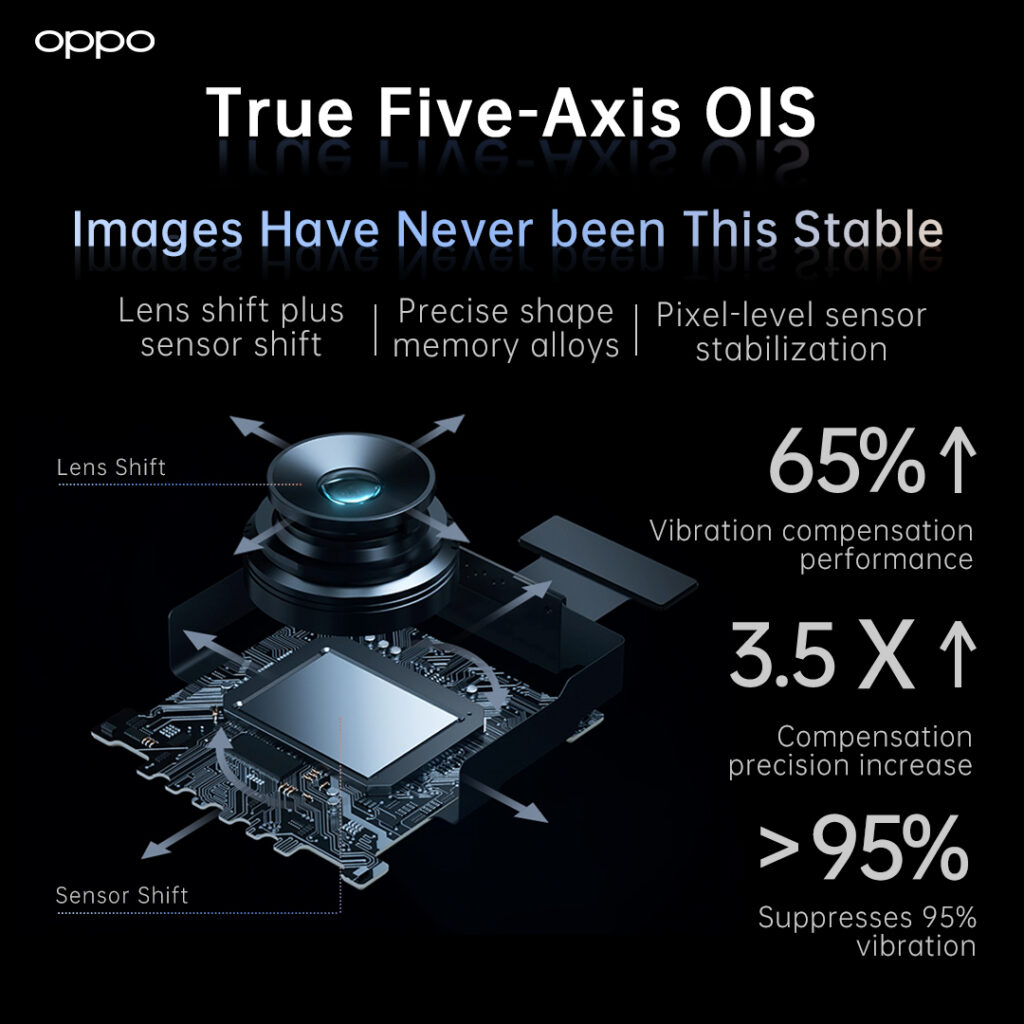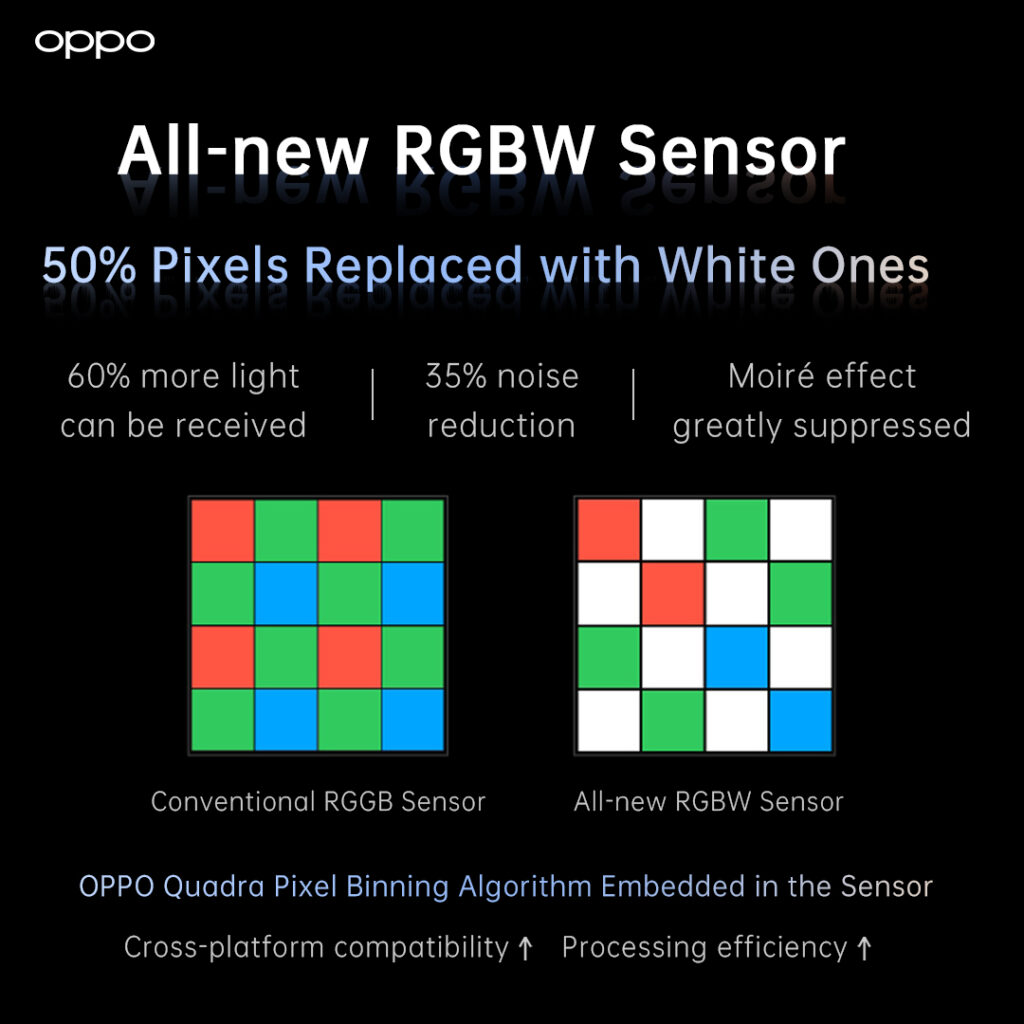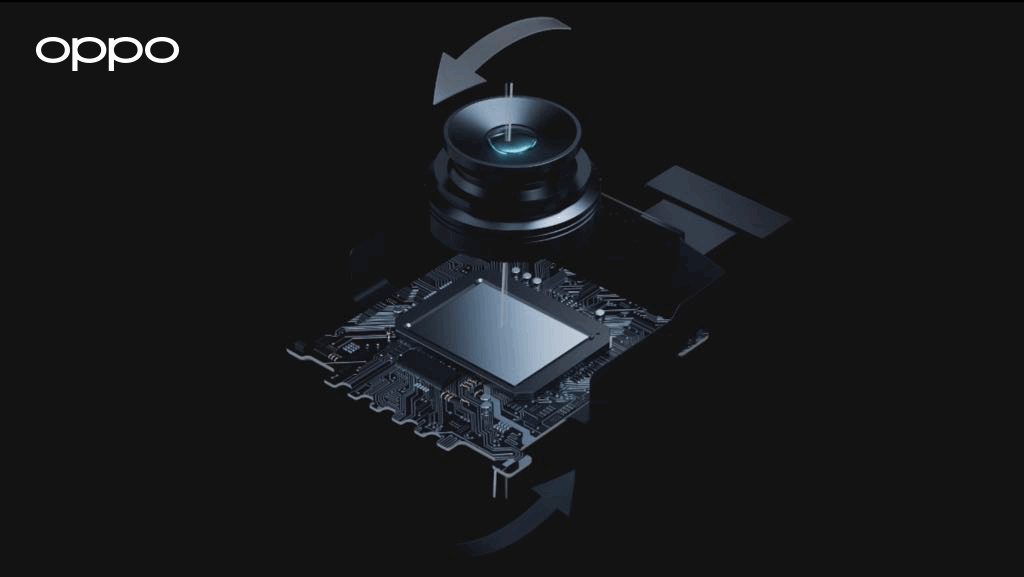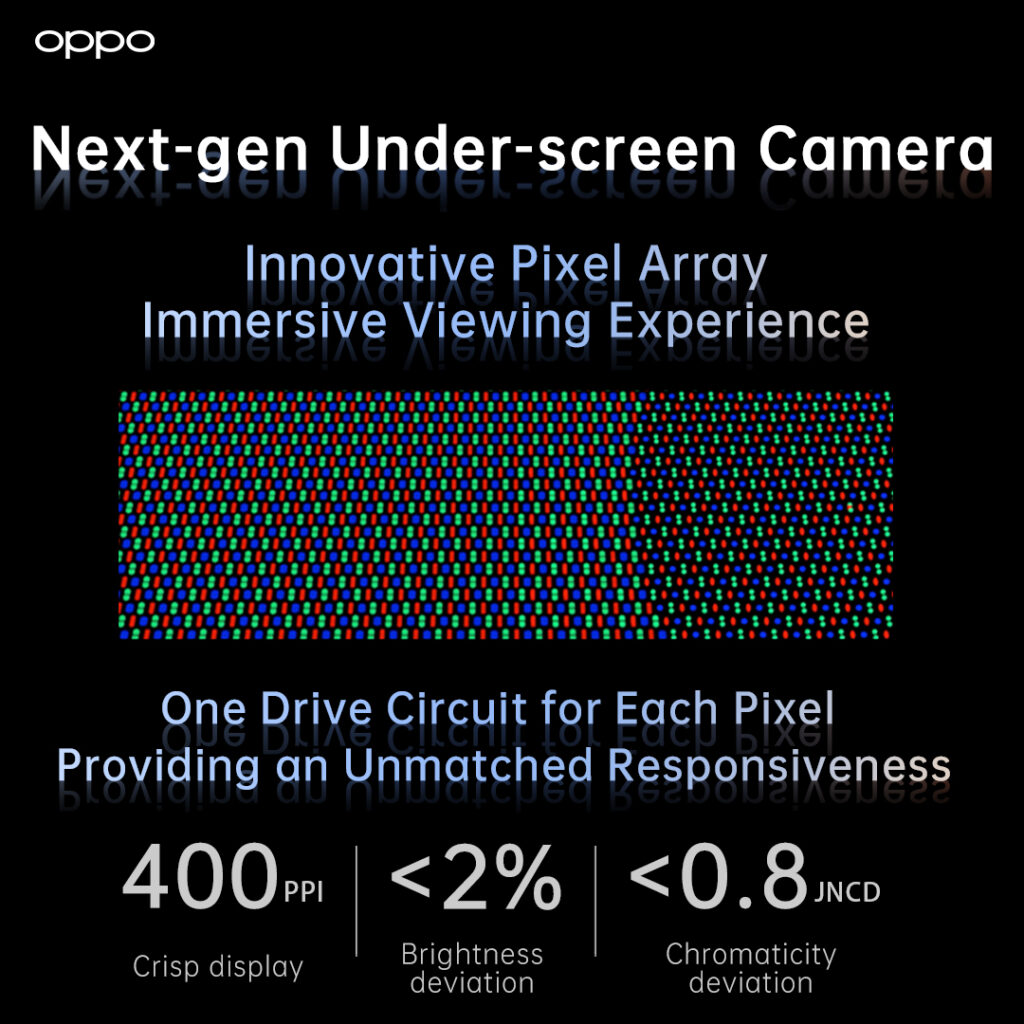In the last few years, OPPO has been at the forefront of smartphone imaging. The company has invested millions of dollars in smartphone camera R&D, and we have seen the fruits of those investments through technologies like the 10X Hybrid Zoom and Under Screen Camera system. And today, at the 2021 OPPO Future Imaging Technology Launch Event, OPPO has announced three more imaging solutions for smartphones. This includes a brand new RGBW (white) sensor, a system that offers continuous Optical Zoom, and five-axis OIS technology for smartphones.
OPPO RGBW CMOS Sensor
For years, companies have tried to tweak the camera sensors inside your smartphones to improve the overall image quality. Huawei developed its own RYYB sensor which did wonders for the brand and now OPPO is out with its own custom CMOS sensor featuring an additional white sub-pixel (W). The company’s new RGBW sensor will significantly increase the light sensitivity (up to 60% more light) by replacing half of the original pixels with the new white pixels along with changes in the pixel position.
Introducing white pixels to boost the light sensitivity of a CMOS sensor isn’t a novel concept. In fact, back in 2015, OPPO’s R7 series featured a similar custom RGBW pixel arrangement, but the results were less than satisfactory. One of the big reasons being, the additional white pixels can reduce the color accuracy as well add moiré effect in the photos captured, due to an increase in the sub-pixel crosstalk.

However, after years of development, the company seems to have polished this technology by introducing a new pixel isolation tech called Deep Trench Isolation (DTI). This reportedly reduces signal cross talk and improves the overall image quality.
Further, OPPO says it’s the first smartphone company to embed a self-developed algorithm (Quadra Pixel Binning) inside a CMOS sensor, which greatly improves cross-platform compatibility as well as enhances image processing effectiveness.
How will the new RGBW sensor improve smartphone photography?
OPPO says that the new RGBW sensor will not only improve low-light photography but also enhance skin, texture, and contrast features in both photos and videos.
The OPPO RGBW sensor will be released commercially from Q4 2021.
OPPO’s Five-axis OIS for smartphones
Remember when OPPO revealed the first sensor-based (instead of lens) stabilization technology for smartphones back at MWC 2016?

Now the company has announced the world’s first Five-axis stabilization technology for smartphones. This is made possible by using two moveable components in the stabilization system – the lens, and the image sensor. The lens is driven by ball-bearing motors, while the sensor gets shape memory alloys. As the system receives movement data from the gyroscope, it will analyze this data through algorithms and make necessary stabilization movements via its lens and image sensor.
If the movement is relatively small, only the lens-shift OIS comes into the picture, covering horizontal (X) and vertical (Y) shifts. However, when the movement is large, the sensor-shift OIS comes to the aid and covers horizontal (x), vertical (y), and rolling shifts to achieve Five-axis stabilization on the phone.
How will the Five-axis stabilization improve smartphone photography?
OPPO’s Five-axis stabilization allows a maximum angle of ±3° thereby improving OIS capabilities by 65%.
OPPO says this technology can significantly improve the stability, clarity, and color performance of the camera system for night-time or motion shots.
OPPO 85-200mm Continuous Optical Zoom
Current smartphone optical zoom solutions often utilize multiple cameras with different apertures and sensor sizes. As a result, when you are zooming into an object, the smartphone will shift between these sensors. But, as you might have noticed, there’s often a sudden jump in the Field of View, color, and white balance when shifting between two telephoto sensors.
To solve this issue, OPPO has developed a continuous 85-200mm zoom system, which will offer true continuous optical zoom without the need for digital zoom or crops in between. The company utilizes a G+P (glass + plastic) lens technology (for the first time) for better optical effects, as well as a tunnel magnetoresistance sensor (TMR) that allows the lenses to move with better stability and precision. The focal length range is also pretty wide, allowing for a wide range of magnification. In short, with OPPO’s new hardware, smartphones can rely on one single system for the entire optical zoom range.
How will OPPO’s 85-200mm Continuous Optical Zoom system improve smartphone photography?
It solves the major pain point of smartphones that utilizes multiple sensors for their telephoto setup. With this system, smartphones can have a smooth transition throughout the zoom range, offering consistent and better image quality.
Unfortunately, OPPO hasn’t revealed when this technology will be available on commercial smartphones.
OPPO Next-Gen Under Screen Camera Solution
OPPO had already detailed its under-screen camera solution a couple of weeks ago. Today, the company revealed that its U.S. Research Institute has developed a set of AI algorithms like diffraction reduction, anti-condensation, HDR, and AWB (auto white balance) to optimize its under-screen camera system.
Interestingly, OPPO said in its event video that it has the best under-screen camera solution so far.
However, OPPO hasn’t revealed a time frame for its release. All we know is that the technology will be available on smartphones in the near future.
RELATED:
- OPPO applies for MagVOOC trademark, its own version of MagSafe
- Realme MagDart Charging Kit Review: We check out Android’ first Magnetic Charging Technology
- Realme Book Slim vs RedmiBook 15 e-Learning vs RedmiBook 15 Pro vs Mi Notebook 14 Horizon Edition








